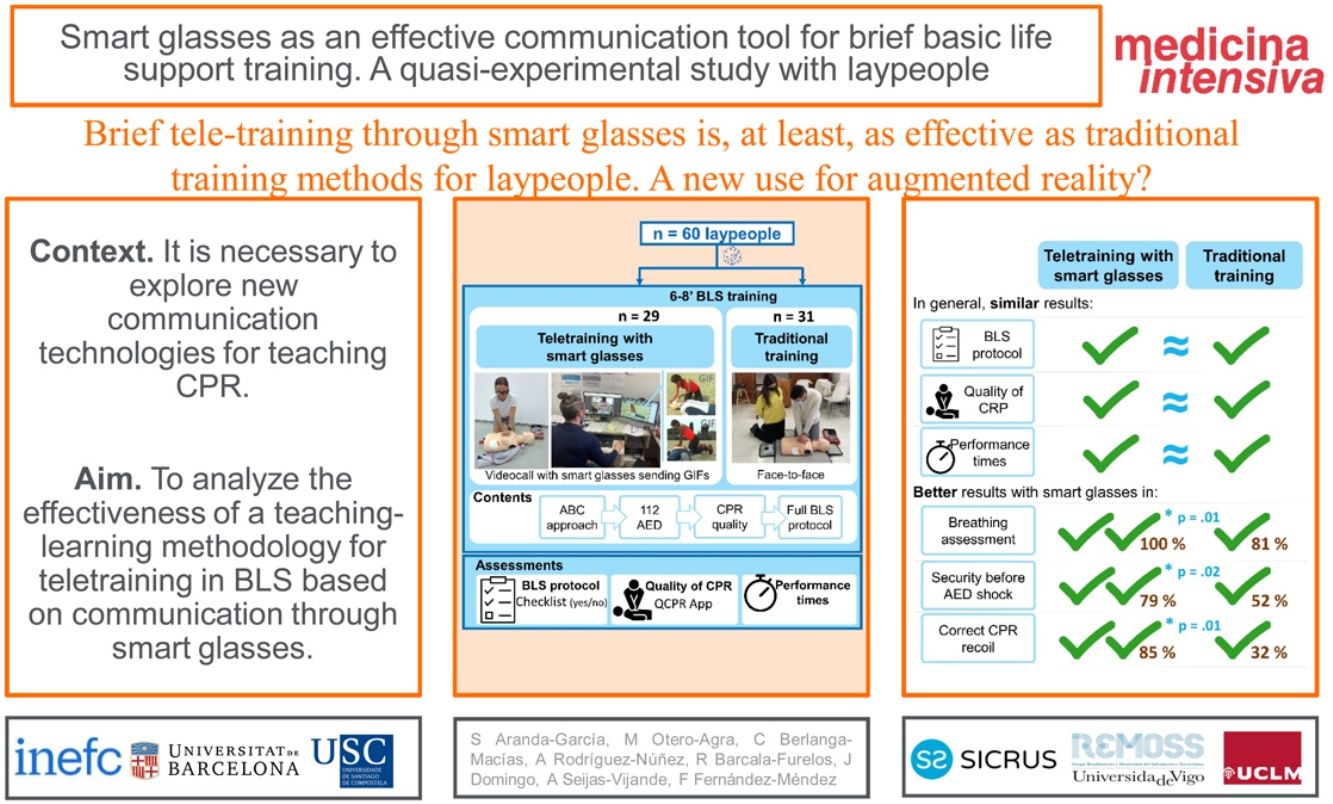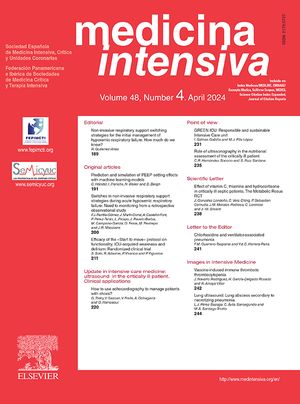To analyze the effectiveness of a teaching-learning methodology for teletraining in basic life support (BLS) based on communication through smart glasses.
DesignPilot quasi-experimental non-inferiority study.
ParticipantsSixty college students.
InterventionsRandomization of the participants in: tele-training through smart glasses (SG) and traditional training (C) groups. Both training sessions were very brief (less than 8 min) and included the same BLS content. In SG, the instructor trained through a video call with smart glasses.
Main variables of interestThe BLS protocol, the use of AED, the quality of resuscitation and the response times were evaluated.
ResultsIn most of the BLS protocol variables, the resuscitation quality and performance times, there were no statistically significant differences between groups. There were significant differences (in favor of the SG) in the assessment of breathing (SG: 100%, C: 81%; p = 0.013), the not-to-touch warning before applying the shock (SG: 79%, C: 52%; p = 0.025) and compressions with correct recoil (SG: 85%, C: 32%; p = 0.008).
ConclusionsLaypeople BLS-AED brief tele-training through smart glasses could potentially be, at least, as effective as traditional training methods. In addition, smart glasses could be more advantageous than traditional teaching for certain points of the BLS protocol and chest compressions quality, probably due to the capability of real-time visualization of images which supports the BLS sequence. Augmented reality supported teaching should be considered for BLS training, although caution is required in extrapolating findings, and further in-depth studies are needed to confirm its potential role depending on concrete target populations and environments.
Analizar la efectividad de una metodología de enseñanza-aprendizaje de teleformación en soporte vital básico (SVB) basada en la comunicación a través de smart glasses.
DiseñoEstudio piloto cuasi experimental de no inferioridad.
ParticipantesSesenta estudiantes universitarios.
IntervencionesAleatorización de los participantes en: grupo de teleformación a través de smart glasses (SG) y formación tradicional (C). Ambas sesiones de entrenamiento fueron muy breves (<8 minutos) e incluyeron el mismo contenido en de SVB. En SG, el entrenamiento fue comunicándose a través de una videollamada con smart glasses.
Variables de interés principalesSe evaluó el protocolo del SVB, el uso de DEA, la calidad de la reanimación y los tiempos de actuación.
ResultadosEn la mayoría de las variables del protocolo del SVB, la calidad de la reanimación y los tiempos de ejecución, no hubo diferencias estadísticamente significativas entre grupos. Hubo mejor actuación de SG al valorar la respiración (SG: 100%, C: 81%; p = 0,013), el avisar antes de la descarga del DEA (SG: 79%, C: 52%; p = 0,025) y las compresiones con buena reexpansión (SG: 85%, C: 32%; p = 0,008).
ConclusionesEl tele-entrenamiento en SVB-DEA para legos con smart glasses podría llegar a ser, al menos, tan efectivo como un método tradicional de enseñanza. Además, las smart glasses podrían ser más ventajosas para ciertos aspectos del protocolo del SVB y la calidad de las compresiones, probablemente debido a la capacidad de visualización de imágenes en tiempo real. La enseñanza basada en la realidad aumentada debe considerarse para la capacitación en SVB, aunque se requiere tanto cautela en la extrapolación de hallazgos como estudios futuros con mayor profundidad.
Article
Go to the members area of the website of the SEMICYUC (www.semicyuc.org )and click the link to the magazine.












